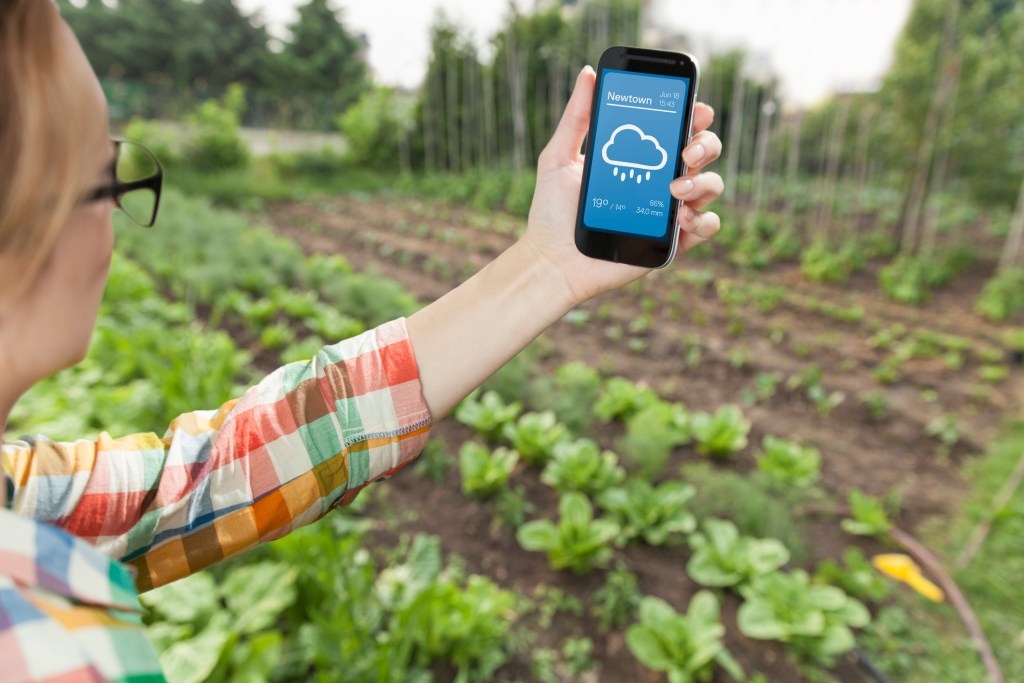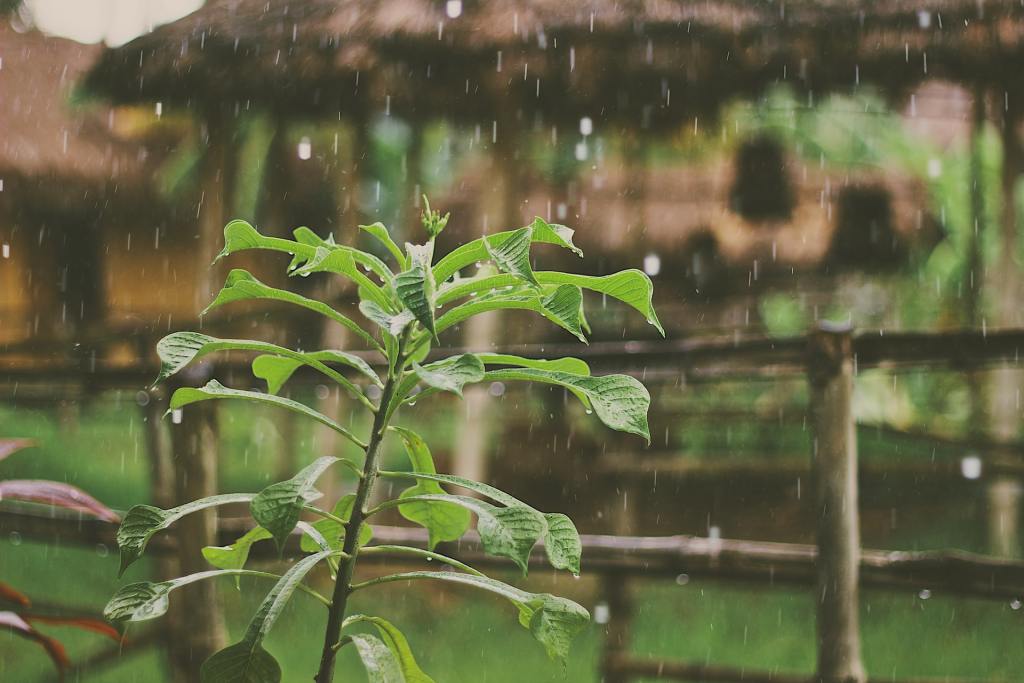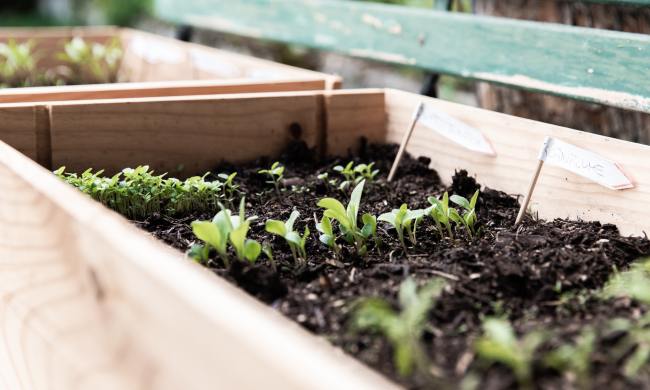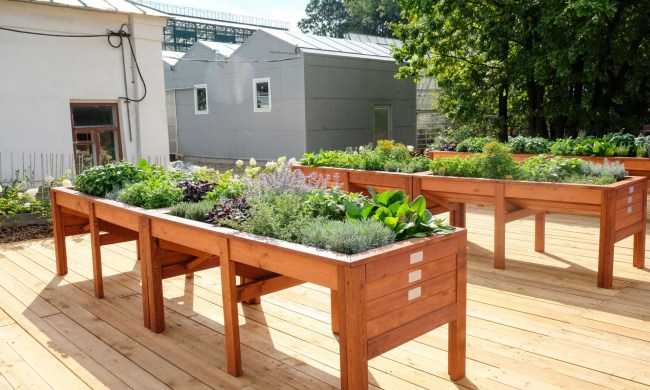Apple now has an iOS 15 update, and with that comes a new and improved Weather app! In 2020, Apple acquired the weather app Dark Sky, and so accordingly, the updated Weather app has integrated extra features from Dark Sky to its update. For gardeners, these additions can especially be handy for planning ahead to keep their green friends happy. Whether it’s helping you know when to prepare for droughts, collect rainwater, shelter your plants, or add mulch, the upgraded Weather app can certainly up your garden plot and harvest game.
Read ahead to learn all the ways that gardeners can use the new iOS 15 Weather app to their advantage!

New design
The Weather app looks a little more streamlined this time around. Mainly, the cards are transparent and divided into sections based on information, so navigating the app is simpler. The information included is detailed, too; you get comparisons with how the conditions were the day before, plus visual representations of the data.
So how can data from the Weather app be helpful? With humidity, for example, you get an idea of when the air is too humid — anything over 50% is considered high humidity. While plants like some water vapor, too much of it can attract pests, breed fungal diseases, and inhibit airflow. Ideally, you want 50 to 60% for houseplants, 60 to 80% for greenhouse plants, and 90 to 100% for germinating plants. The Weather app also now adjusts the temperature (“feels like” temperature) based on humidity, which can make it feel warmer! To counter excess humidity, pick native plants, give your garden plots space, and prune and pull diseased foliage. As a gardener, don’t forget to stay hydrated and wear comfortable clothes for humid weather. With too little humidity, on the other hand, group plants together to help them form a naturally humid environment.
With the wind forecast on the Weather app (with windy being gusts that go from 21 mph and higher), you can get a heads up for when you need to protect your plants. This may mean putting down stone blocks by your garden, staking your plants, or even moving some pots into a greenhouse or your home to keep them from tipping over. The app also now reveals the direction of the wind, so you can know which plants and areas will be most impacted by it.
Weather maps
The Weather app in iOS 15 now includes full-screen weather maps that offer information on expected precipitation, temperature, and air quality — access maps anywhere by clicking on the folded map at the bottom left corner of the Weather app. Temperature maps let you see the temperature of your region. The top of the home page also reveals a 12-hour temperature forecast so that you can plan ahead for the day, letting you know if you should give your plants extra shade, bring them indoors, mulch their soil, or water them. Temperature, of course, can also help you determine when to end and begin your seed cycles in the fall and spring.
Another useful weather map included in the update is the air quality map. Air quality may not seem like it directly impacts your plants, but being aware of airborne particulates, especially if you live in an area impacted by wildfires, gives you a heads up for when you want to wash your homegrown food more carefully to get rid of surface deposits of soot and other substances. Of course, there’s also the matter of if you should be outside gardening at all — you may want to have an N-95 mask on hand at the very least.

Notifications for next-hour precipitation
The Weather app’s precipitation features can be helpful for planning. The precipitation map is a live map that shows incoming storms and how intense they are, as well as a 12-hour forecast. The updated Weather app now notifies you about incoming precipitation within an hour’s time. With this feature, you can shift your schedule around if there’s no need for you to water. (You certainly don’t want to rot your plants by giving them too much water.)
The precipitation feature also gives you an idea for when you can start collecting rainwater — this will not only trim down your water bill, but will also cut down on your water usage for more water-smart gardening. Plus, rainwater is great for finicky indoor plants like calatheas! The next-hour precipitation notification will also inform you about how intense the precipitation will be. Being aware of extreme instances of precipitation — heavy rain, snow, and hail, for example — will let you know if you need to install protective row covers or move your plants indoors. On the opposite end, if you’re expecting drought, it may be time to plan ahead for mulching and mixing water-retentive soil.
The Weather app update that comes with the new iPhone iOS 15 is an excellent resource for gardeners. Instead of rolling with the punches, keep an eye out on temperature changes, air quality numbers, precipitation levels, and other weather data points to prepare your garden, rain or shine. There’s no need to download a new app or pay for one — simply install the new iOS to prep your garden for any weather condition!



